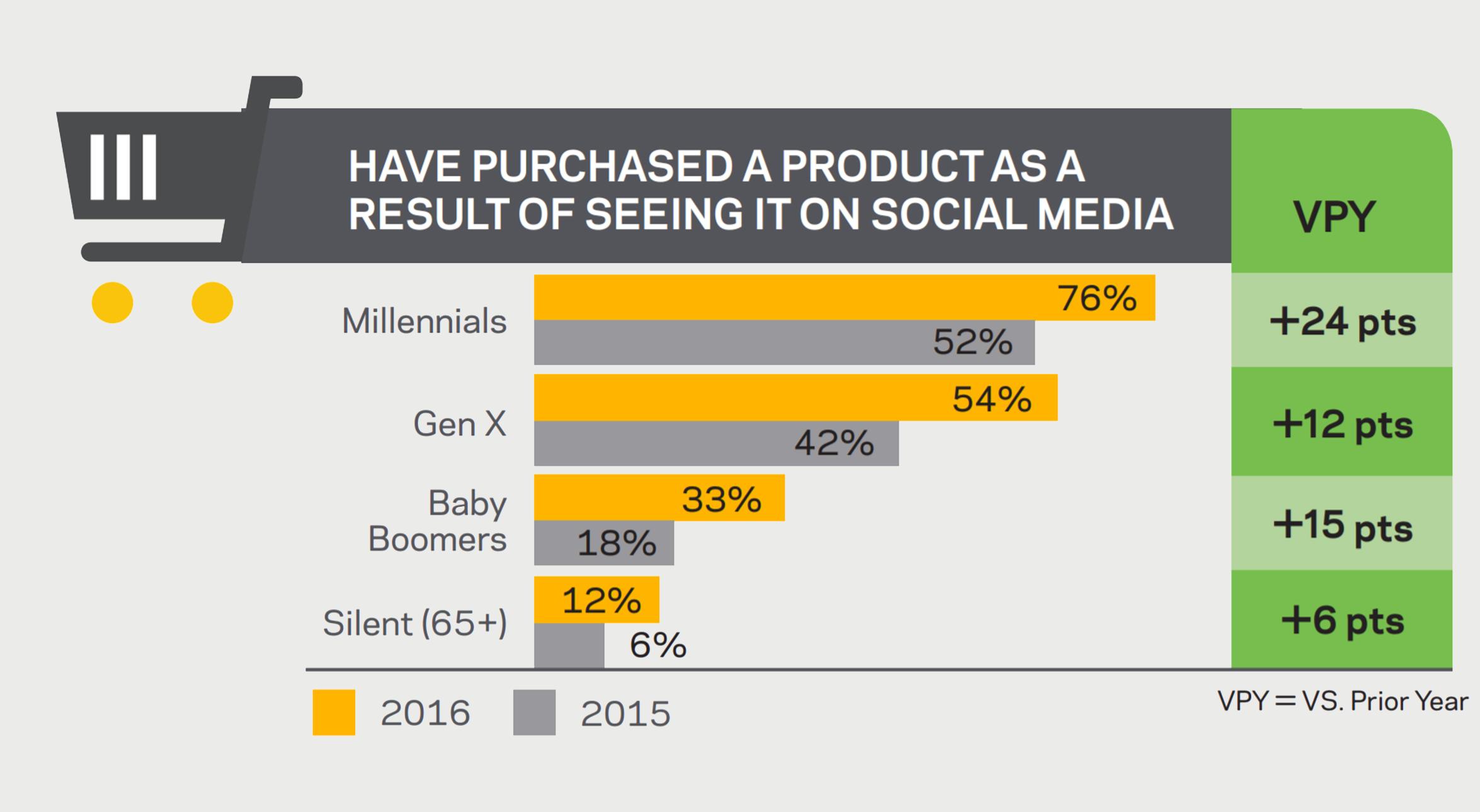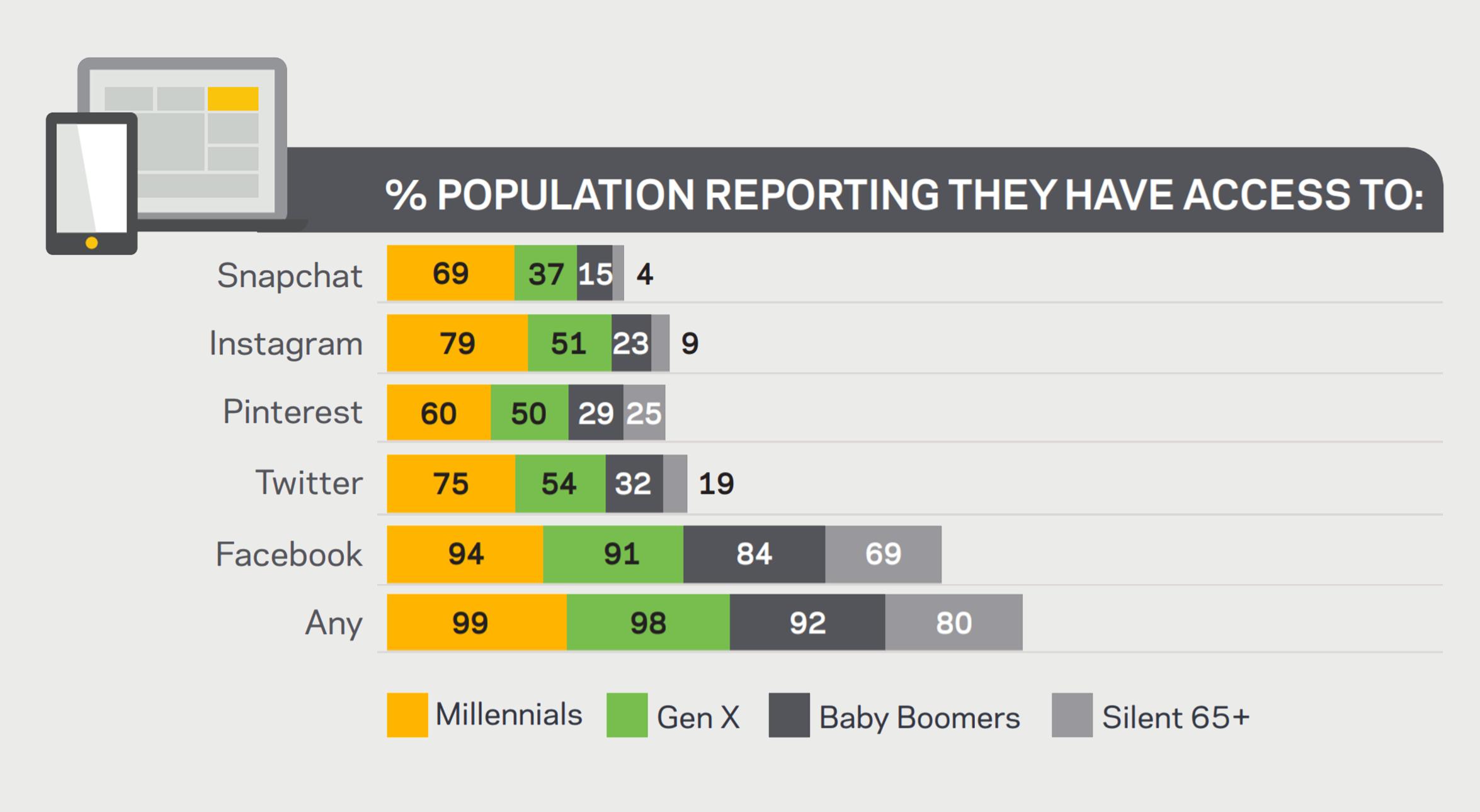White Paper
October 20, 2016, 3:47 PM EDT
Driving Shopper Engagement through Digital Technology
The sixth annual Synchrony Financial Digital Study
DOWNLOADAuthor
Contributors
Jennifer Muller
Judy Lahart
Sarah Zupnick
Abstract:
Table of Contents
Insights—Executive Summary
Insight 1 — Overall adoption of smartphone technology has continued to increase, driven by Gen X, Baby Boomer and Silent Generations.1
Insight 2 — Using mobile technology for shopping-related tasks increased dramatically in almost every area of the retail experience.
Insight 3 — Providing mobile offers drives shopping behavior.
Insight 4 — Mobile wallet awareness has skyrocketed, but regular usage has lagged.
Insight 5 — Social media is now a significant sales driver. The rise in social media influence is apparent in all age groups.
Insight 1: Smartphone Ownership Continues To Rise
Optimize the digital experience. Create a digital experience using responsive design to make it easy to view on a smartphone, tablet or laptop. Make it easy to access and navigate the site (or app) and make purchases.
Incorporate “pull” functionality. Make the email, app or text offer easy to navigate. Pull users into the app or website to see the product and access the offer. Too many steps in the process can lead to frustrated customers and lost sales. Create content that is intuitive and easy to read.
Keep it simple. Customers new to smartphone technology may be afraid of making mistakes. So make it easy for users to be comfortable. Ensure that customers always understand what screen they are in (purchase screen, confirmation screen, etc.), on the app or website.
Take security seriously. Ensure strategies are in place that protect the privacy of the customer. Use secure technology that encrypts and protects credit card information.
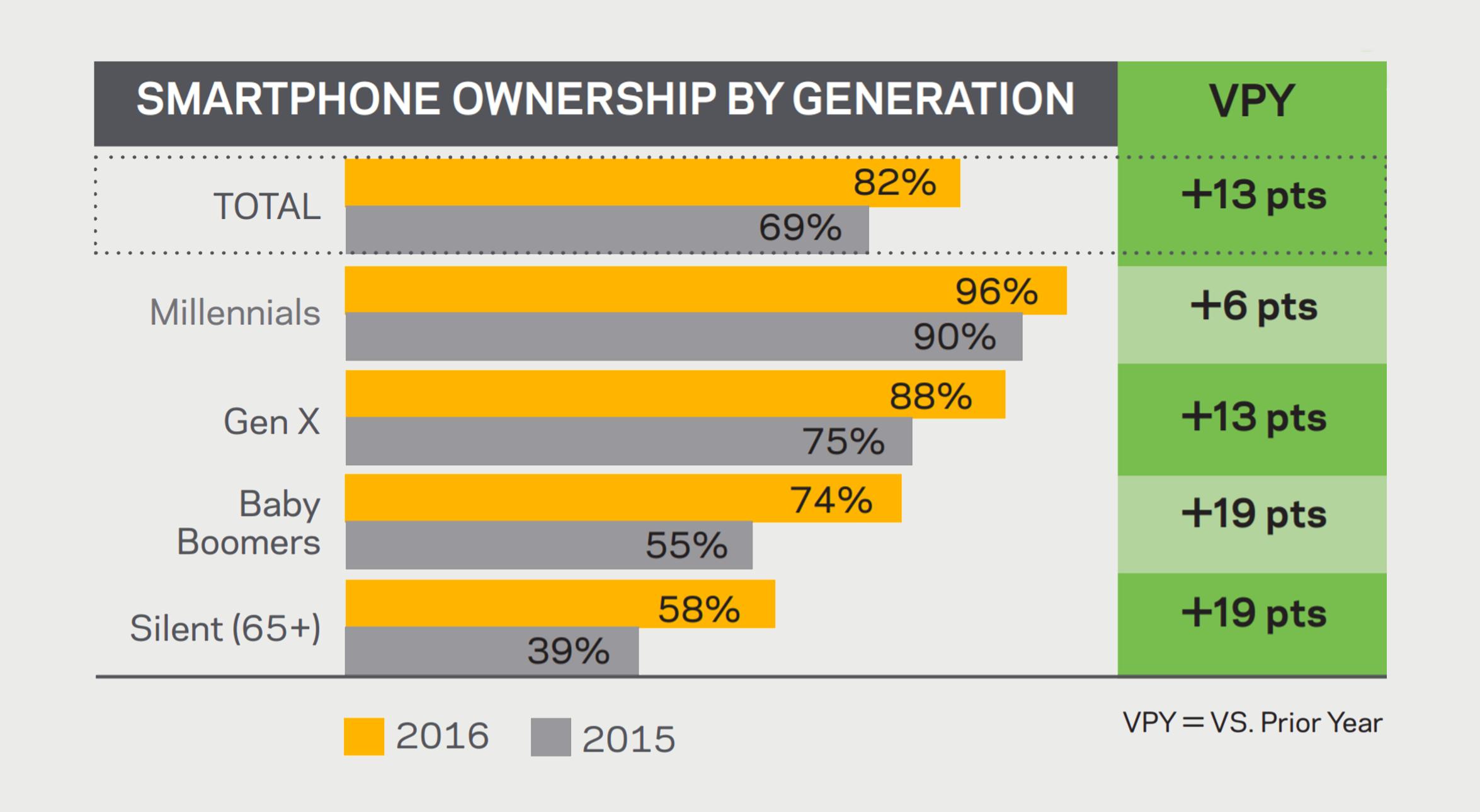
Insight 2: Mobile Technology for Shopping Has Become Prevalent with The Majority of U.S. Shoppers
Over half the population has researched a product, checked in at a retailer, tracked rewards points, or checked out while using a smartphone in the last three months alone. This behavior has dramatically increased since 2014 and 2015, when smartphone usage for shopping remained relatively flat, at about 35-45%.
Make it intuitive. Since consumers are shopping with smartphones, ensure the experience is intuitive, frictionless and fun.
Communicate brand values. Content marketing has become a key way to get brand messaging out. Focus on what the brand stands for and what the experience is from the customer’s point of view. This can be done through social media channels, YouTube videos and influential bloggers.
Design apps with high functionality. The best shopping apps authenticate with a thumbprint and don’t ask the customer for the same information every time they engage. Biometrics makes this possible. The app should provide access to everything related to the shopping experience—rewards, travel and checkout (e.g., Starbucks® mobile app has the reward program, payment capability and geo-location all in one place). This makes the process quick, easy and intuitive.
Digital loyalty via app. Our 2016 Loyalty Consumer Study revealed that 38% of consumers use digital loyalty cards and that 53% find digital loyalty programs appealing.2 For retailers who have loyalty/rewards programs, it is imperative to have a digital strategy in place.
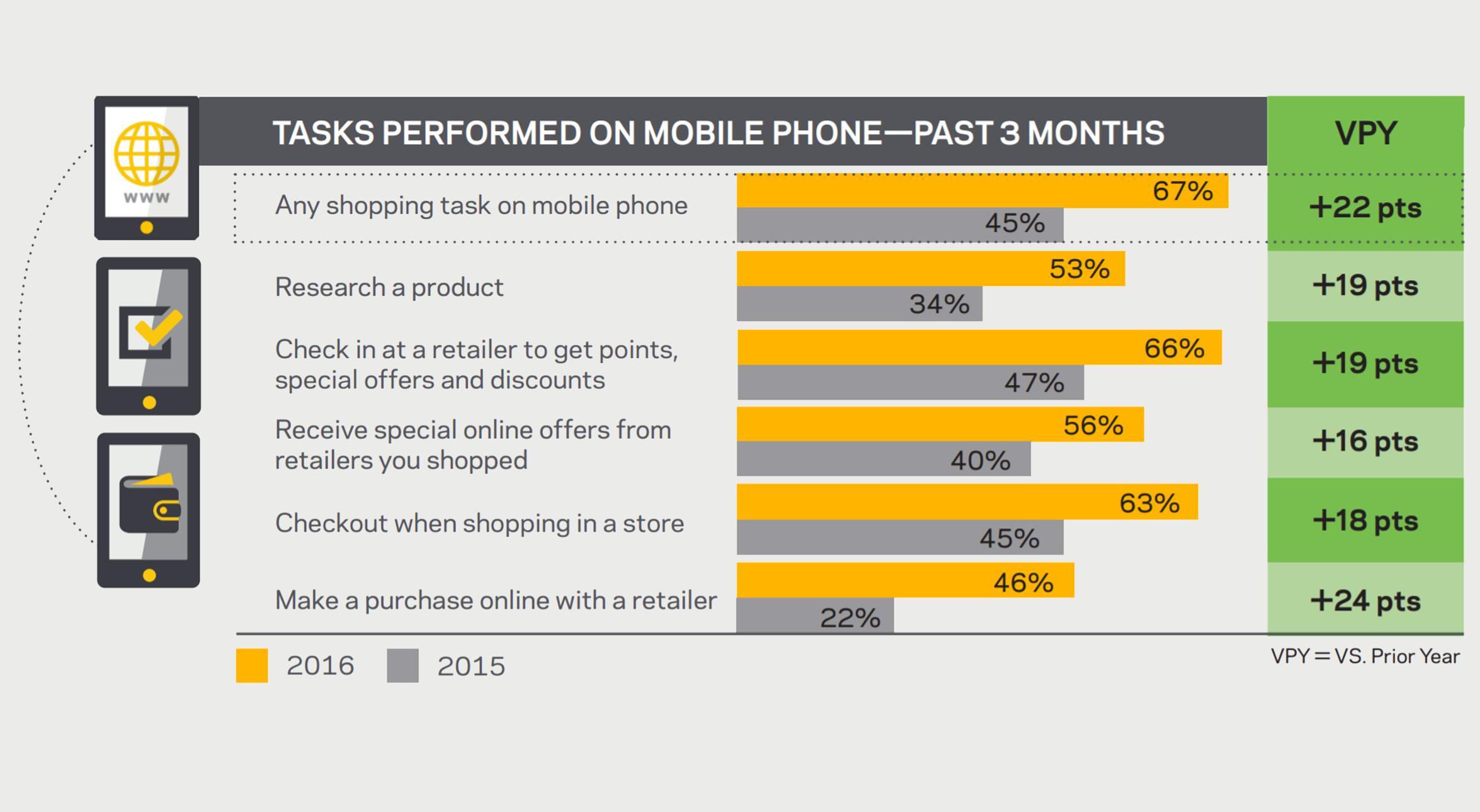
Insight 3: More Than Half of Shoppers Say Mobile Offers Would Drive Behavior
• Basket size increases 26% when customers use a mobile coupon4
• 39% of customers spend more if they receive a personalized coupon5
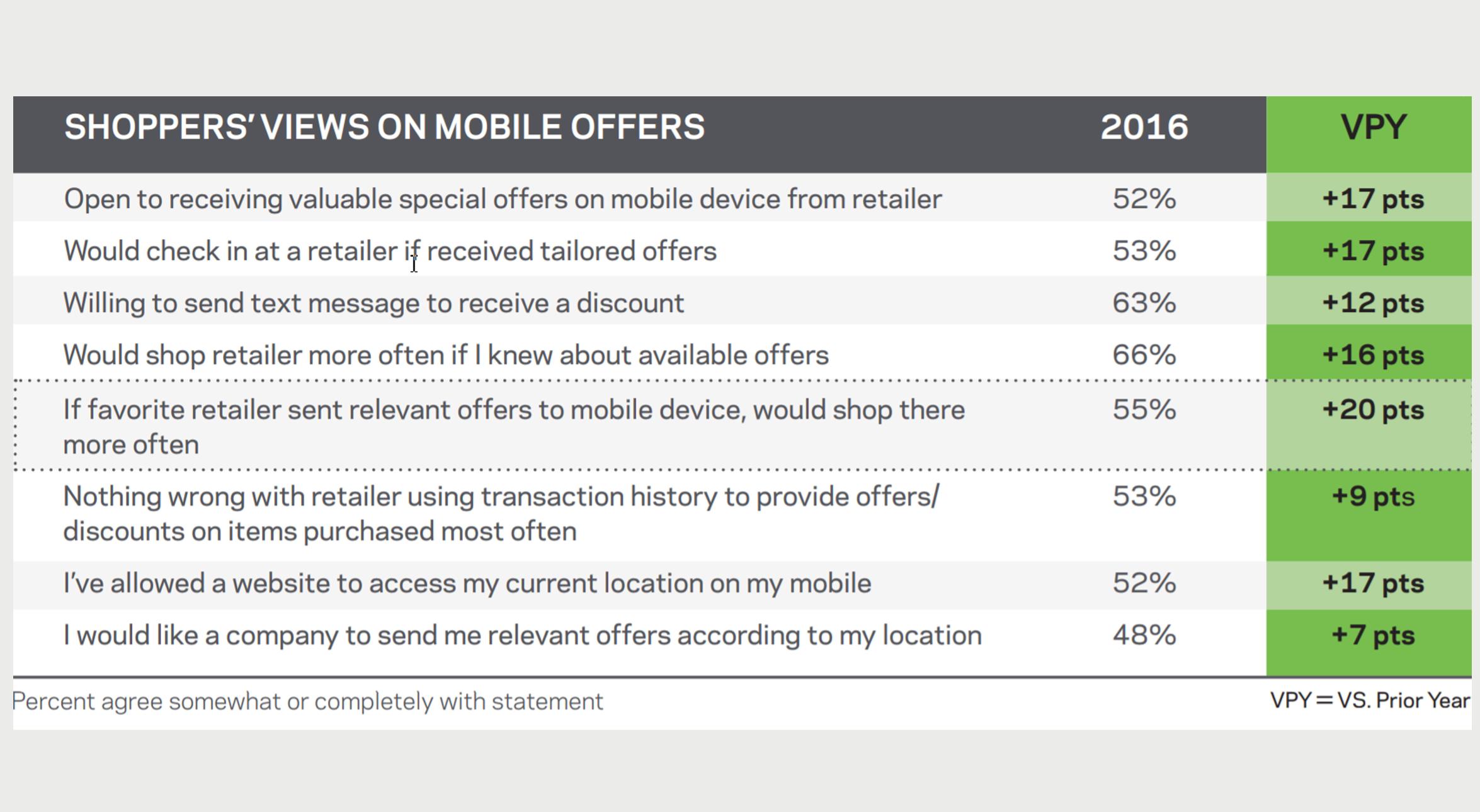
Insight 4: Mobile Wallet Awareness Has Increased Dramatically in The Past Year, But Regular Usage Has Lagged
• The technology is promoted and immediately available on new smartphone models (e.g., Wallet on Apple iPhones, Samsung Pay, etc.)
• An increase in advertising
• Greater retailer adoption of Point of Sale (POS) technology
While 61% of consumers report that they have tried mobile wallets, only 9% indicate they are likely to use them in the next 12-18 months. Barriers include a lack of perceived need, and a perceived concern about safety and security. On the other hand, there is growing awareness of the added convenience of the mobile wallet, as well as the increased speed of use.
BENEFITS
- 65% Convenience
- 59% Speed
- 47% Security
- 51% Happy using traditional payment cards
- 46% Not sure it’s safe/secure
- 43% Don’t have a need
Give customers reasons to use it. Since the majority of consumers say they are happy with traditional cards, encourage mobile wallet use by providing an offer or unique value proposition to load their credit card and try the wallet. A recent Forrester® research study found that 63% of retailers feel that consumers will use mobile/digital payments when more features become available—these include elements like coupons, offers and loyalty programs.7 The use of mobile wallets as marketing and advertising vehicles is increasing. A number of advertisers and brands now provide consumers with a link that downloads a customized offer to the Apple or Android wallet app.
Make it more ubiquitous. Paying with a mobile phone would be more appealing if it replaced a physical wallet. However, today’s consumers don’t have a clear understanding of which retailers accept the mobile wallet and which don’t. According to the same recent study of retailers by Forrester Research, retailer adoption is growing, as 75% of retailers say they plan on accepting Apple Pay by the end of 2017.7
As a result of improved value propositions for mobile wallet use and increased POS acceptance, mobile wallet adoption is likely to grow in the coming years. Retailers who have not yet embraced mobile payment technology should consider them as they develop POS strategies in the coming years.
Insight 5: Social Media Drives Shopping Behavior
Select the most effective channels. Test many social media channels and select which ones appeal most to customers. The majority of all generations have access to Facebook, but as the above chart shows, Millennials are more likely to be on Instagram and Snapchat.
Maintain a social media strategy tied to brand identity. This strategy should feature helpful content, not just a sales pitch. Social media content that makes an emotional connection to the brand is the most successful. A highly interactive social media strategy is especially important for retailers who have a large Millennial customer base, as three-fourths of Millennials report that social media influences their purchases.
Keep it engaging. Use social media in a fun way by creating games and encouraging social interactions while customers are in the store.
